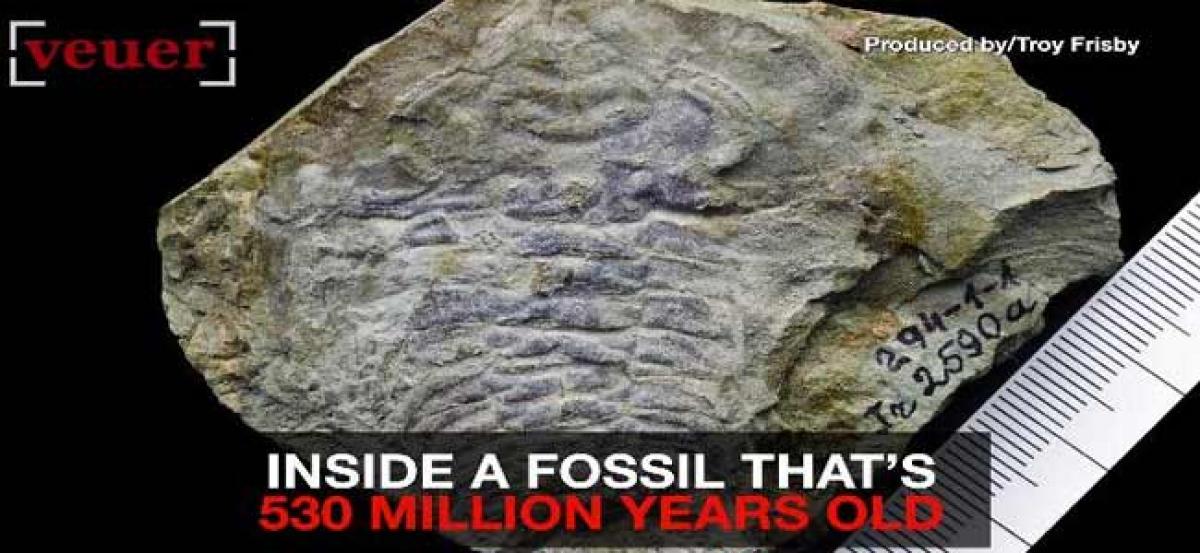Live
- Bringing joy to MPP schoolchildren
- Contaminated food worth Rs 52,000 disposed
- BJP MLA warns of protest over Panchamasali reservation demand
- Sunspots and solar flares can affect Earth’s surface
- Discom staff neglect jungle clearance at poles
- Experts at COP29 urge India to tackle short-lived climate pollutants
- AGP inducts new locomotive
- Visakhapatnam: 31-year-old attacks girl for refusing his love
- MyVoice: Views of our readers 15th November 2024
- NWKRTC embraces digital payments to enhance passenger experience
Just In

Researchers have unearthed what they believe to be the \"oldest eye\" in a 530-million-year-old fossil of an extinct sea creature.
London: Researchers have unearthed what they believe to be the "oldest eye" in a 530-million-year-old fossil of an extinct sea creature.
The fossil of Schmidtiellus reetae, which includes an early form of the eye seen in many of modern animals, including crabs, bees and dragonflies, was discovered in Estonia, while the researchers were examining the remains of a fossil called as Trilobite.
Trilobite -- the hard-shelled ancestors of spiders and crabs -- lived in coastal waters during the Palaeozoic era, between 541-251 million years ago.
"This may be the earliest example of an eye that it is possible to find. Older specimens in sediment layers below this fossil contain only traces of the original animals, which were too soft to be fossilised and have disintegrated over time," said Brigitte Schoenemann, Professor at the University of Cologne in Germany.
The findings, published in the journal Proceedings of the National Academy of Sciences, revealed that Schmidtiellus reetae had a primitive form of compound eye -- an optical organ that consists of arrays of tiny visual cells, called ommatidia, similar to those of present-day bees.
Although the species had poor vision compared with many modern animals, it could identify predators and obstacles in its path.
Its eye consisted of approximately 100 ommatidia, and did not have a lens, like the modern compound eyes, probably because the primitive species lacked parts of the shell needed for lens formation.
These compound eyes have changed little over 500 million years, the researcher said.
"This exceptional fossil shows us how early animals saw the world around them hundreds of millions of years ago. Remarkably, it also reveals that the structure and function of compound eyes has barely changed in half a billion years," said Euan Clarkson, Professor at the University of Edinburgh.

© 2024 Hyderabad Media House Limited/The Hans India. All rights reserved. Powered by hocalwire.com







